Growth Hacking: How we got our first 20 SaaS customers [GUIDE]
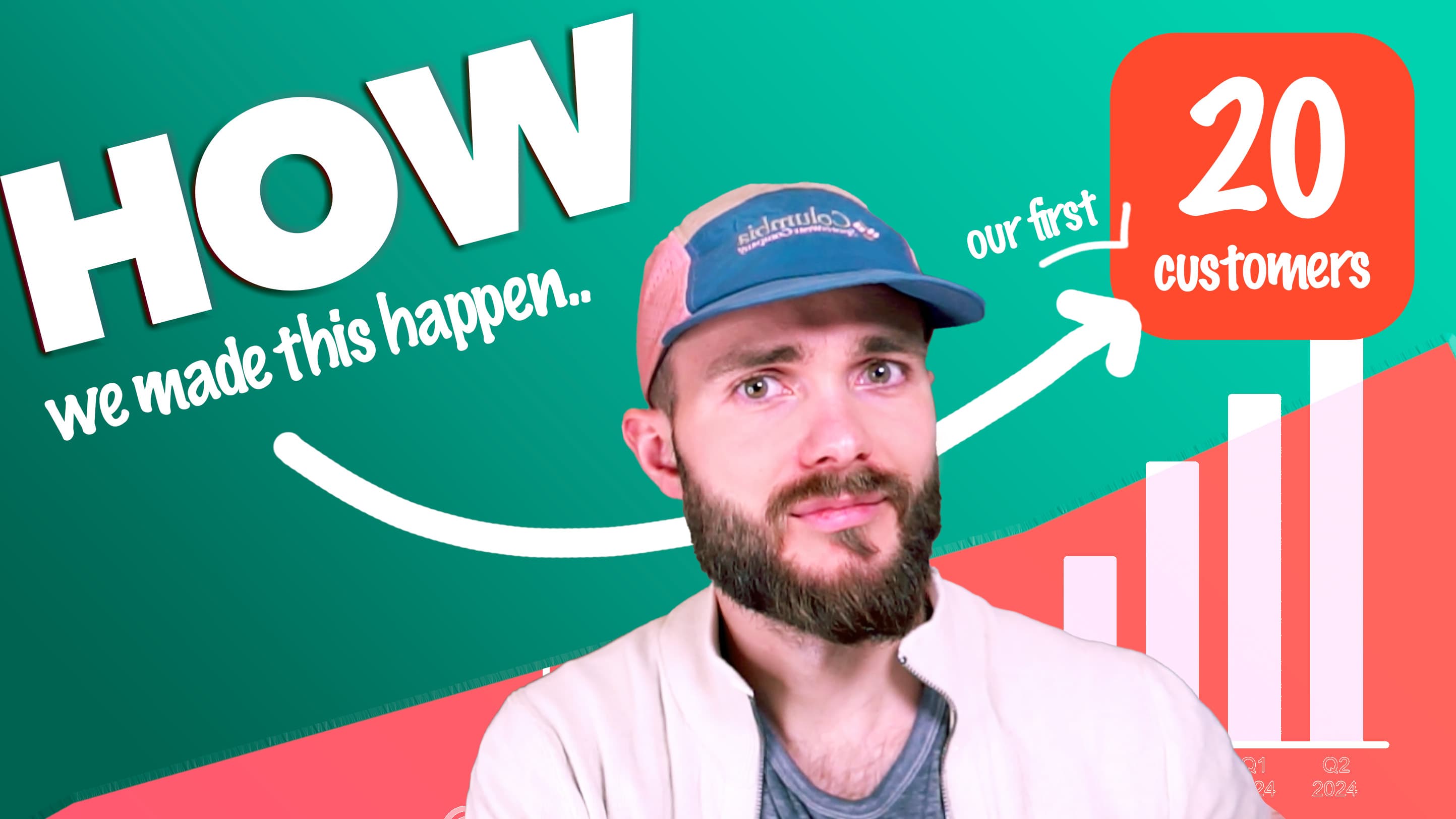
Contents
Growth hacking is not about taking shortcuts, or get-rich-quick schemes. It's about systematically finding creative ways to engineer growth and get customers for a startup.
Here is the guide on how we got our first paying 20 SaaS customers - and how you can too.
What is growth hacking?
After now 4 spending years engineering growth myself for my B2B SaaS past 100 paying customers - and running experiments almost every day of the week. Here is my take on the definition of growth hacking.
“Finding ways to get outsized growth returns with fewer resources - either amongst customers, optimizing existing growth channels, or finding new ones.”
- Jonathan Rintala
Imo 'growth engineering' is a more accurate term than growth hacking.
Growth hacking in 5 steps
🧪 run scientific experiments
🛠️ get practical with it -> get your hands dirty
✏️ produce content, code, etc. to scale yourself
📊 measure, follow-up and find what works -> double down
🚀 make growth happen
What growth hacking is NOT
❌ get-rich-quick schemes
❌ finding a silver bullet that solves growth forever
❌ something theoretical you draw up in the boardroom
What growth hacking IS
✅ systemizing growth like an engineer (A/B testing, Bullseye Framework, etc)
✅ being creative, finding new ways to grow with limited resources
✅ not brute forcing channels everyday just because you "should"
✅ having your company spend time on the right things to reach your ICP
✅ introducing growth hooks into your product -> expose it to the world
✅ finding paths of least resistance
The 19 growth channels to choose from
There are lots of channels to choose from when growing a startup.
To be more specific there are 19 growth channels listed in the book 'Traction: A startup's guide to getting customers' by Gabriel Weinberg (2014).
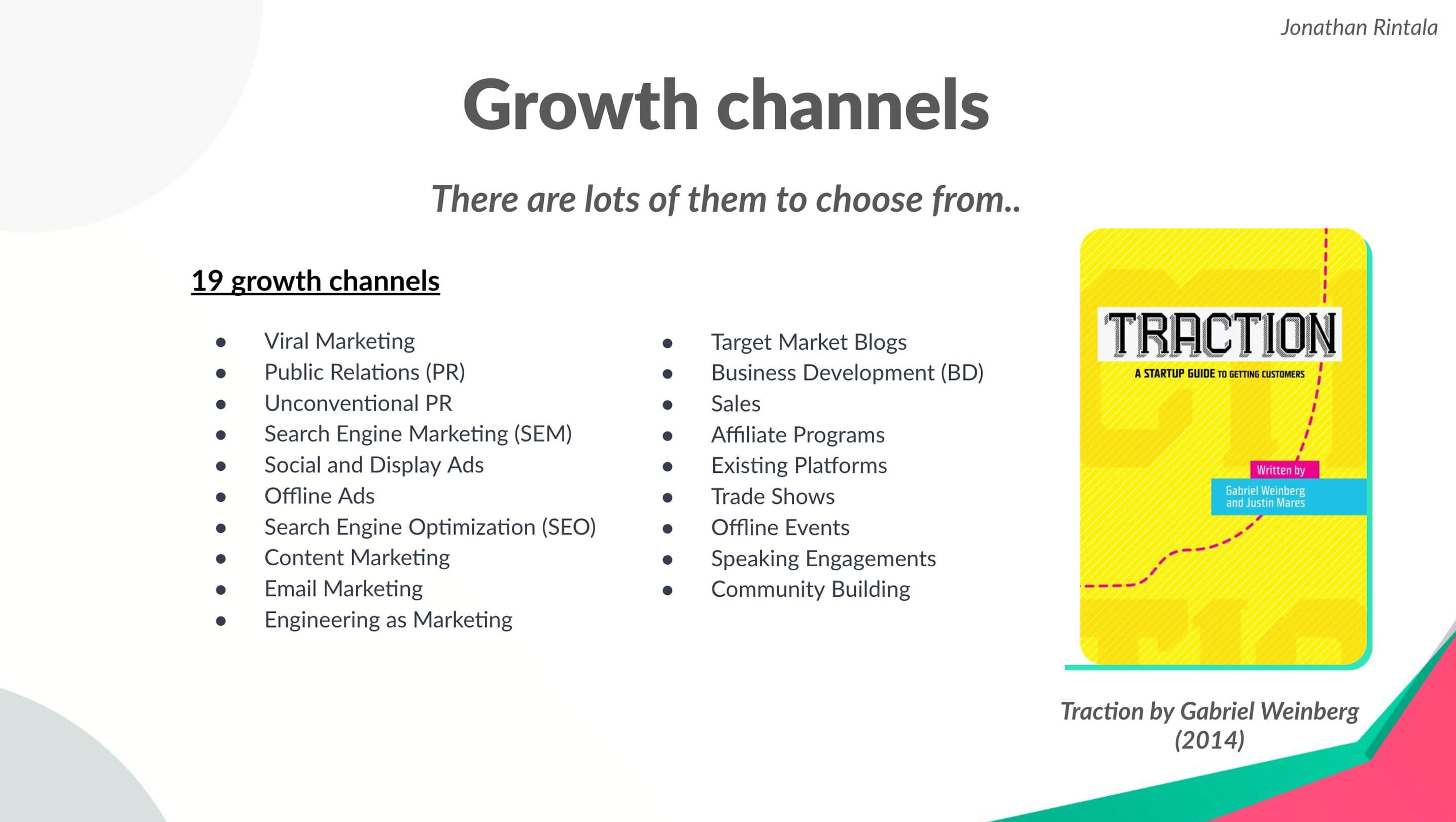
You should not work with all channels, or even experiment with all of them. But it's good to have an overview - to make sure you pick the right ones for your (1) startup and (2) ICP.
But also the (3) right way to grow for you as a founder, as founder-gtm fit is imo hugely important to succeed.
How to choose between growth channels?
You can use the Bullseye Framework (also from the book Traction) to choose a few ones - to make sure you stay focused, while allowing for experimentation.
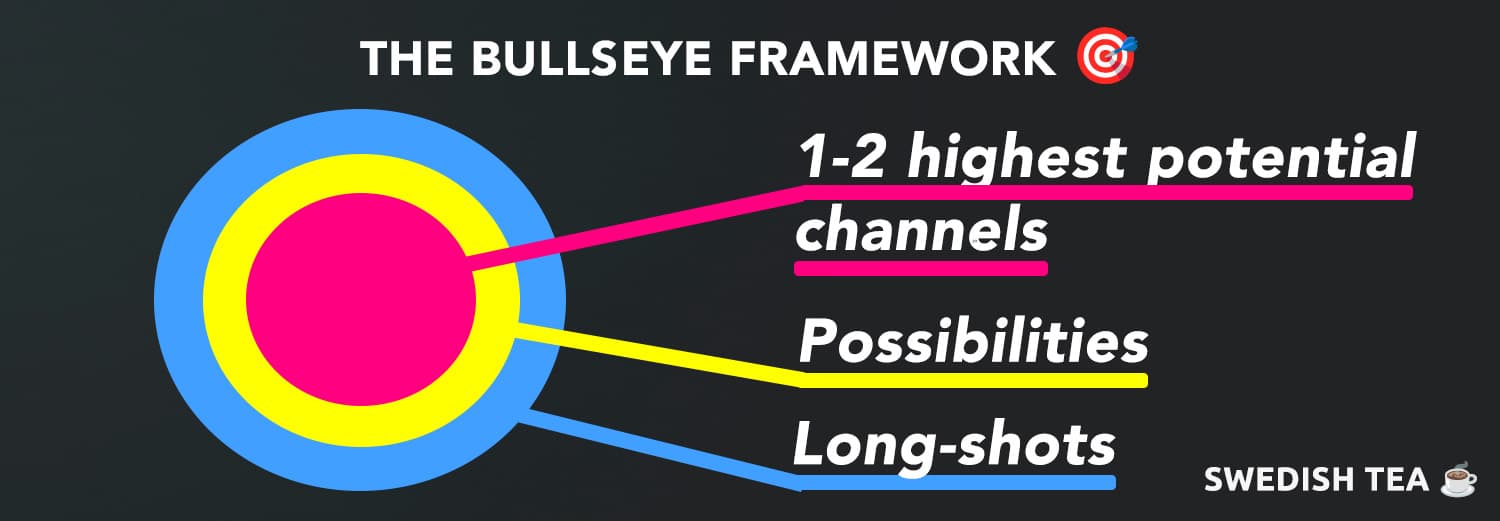
The 5 growth channels we used to get our first 20 paying SaaS customers
Here are the 5 growth channels that produced our first 20 paying B2B SaaS customers for my startup Univid.
Partners & doped WoM 💉
Outbound sales ☎️
Existing communities 👥
Built in virality 🦠
Founder-led content ✏️
Let's take a look at each one and see exactly what we did.
1. Partners & doped WoM 💉
Let partners + customers do the talking for you.
Partnerships are hard. You either spend a lot of time on something that won't work at all, or it becomes the best growth channel ever.
For us at Univid, starting to distribute our SaaS via partners (in our case event firms) was the best thing ever. We got big brands and customers right out of the gate, as our FIRST customers - for example, some of the biggest tech companies in the world.
Thanks to this first partner - we started working with the studio involved in the first event, the production company, other event agencies, etc.
The network graph just kept growing.
![SaaS customer acquisition through partners [example] SaaS customer acquisition through partners [example]](/_next/image/?url=https%3A%2F%2Fimages.ctfassets.net%2F0ck4z1m88rve%2F3mVfKkMGyQ3DO5Kl1ZPTJt%2F8e9bec573ec7443b9e282a6ef31d2741%2Ffirst-partner-customer-acquisition-saas.jpg&w=3840&q=75)
One partner for us at Univid led to many customers for that were all interconnected
These companies trusted our partners. So in turn, they trusted us.
That reduced the reputation risk of buying our solution and as the book 'Way of the Wolf' talks about - prospects have to trust (1) your product, (2) your company, and (3) you as a sales person.
Our partners ticked all of these boxes. And did it for us..

How to find the right partner?
The natural next question - how do you find the right partner? Well, this one is tricky. If you have aligned incentives in making money and solving each other's headaches that is a good start.
Also, being friendly and having a good chemistry is a MUST to stay top of mind and make a partnership work.
For us, it was easy an easy equation of mutual partner value:
we were the "tech guys" who could help the event agencies with the complex and scary tech stuff of going live to 1000s of people at once
in return they solved our headache of finding companies that would trust 2 random "tech guys" straight out of university with 0 real logos and 0 reputation
The Growth Tonic NewsletterMonthly newsletter with growth tips, experiments, and hand-picked SaaS insights - right into your inbox.
How to 'dope' partnerships and WoM?
WoM (word of mouth) is awesome - because it is super cheap and scales with you having more customers and getting more exposure.
Today, well over 20% of our new SaaS customers for Univid are referred, ie. attributed to word of mouth.
- Jonathan Rintala
What we have always done well is 'doping' our partnerships and the existing WoM that we have. Both when it comes to getting our customers to give us G2 reviews, and when getting word to spread about our SaaS in their networks.
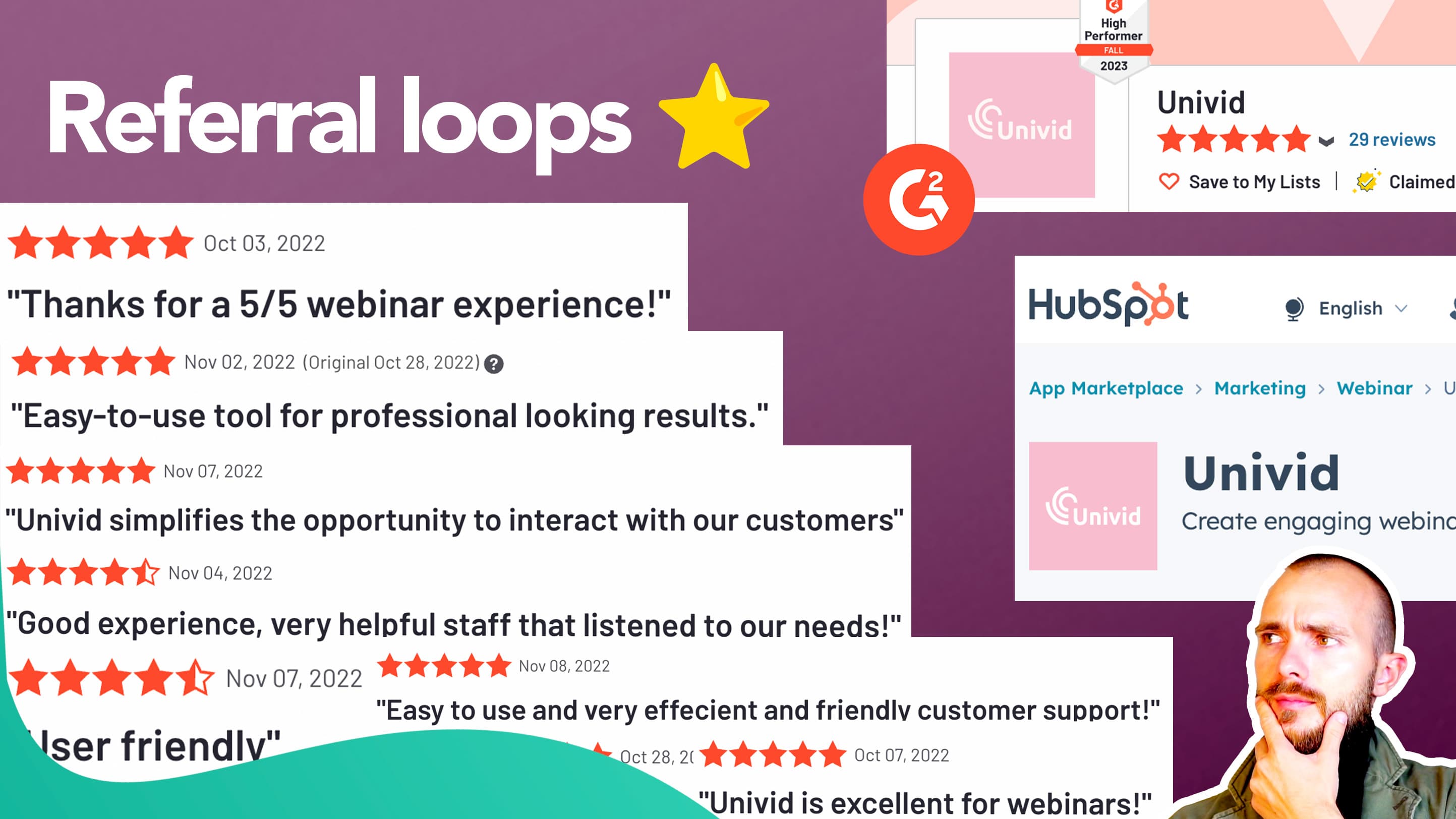
IMO it's a myth that customers will just talk about you all the time on their own - maybe if you truly have hit something special, but the reality is - you often have to put in some work to get it happening..
Here is how you can amplify things. This part is easy.
Create free content that makes your partners and customers look so good they want to share it. That's how you boost word-of-mouth and grow fast.
- Jonathan Rintala
Make your partners and customers look so good they will want to share it, like it, engage with it.
From 1 single event -> we made:
a short behind-the-scenes movie (that an event agency one time even pretended the content was theirs and shipped it to the customer as part of the production!)
a few posts with screenshots for LinkedIn, Instagram, and Facebook (tagging all the speakers, companies, etc. involved in the event)
a case and story on our website
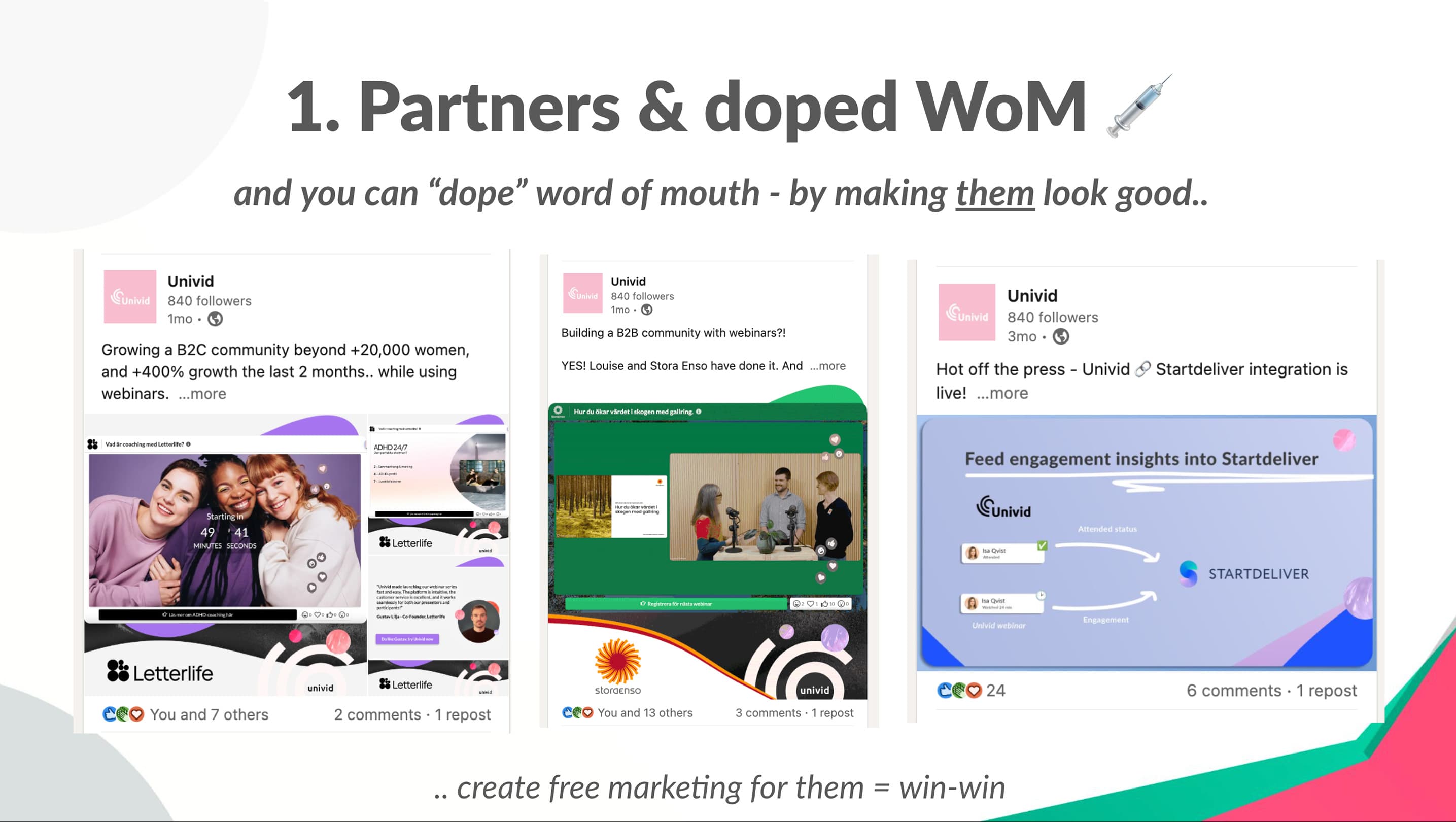
Often with quotes from the customer and partner. This way we boosted the existing effects and WoM we were already getting - and soon everybody knew about Univid.
2. Outbound sales ☎️
Outbound sales means you actively reach out to specific customers. Typically, either via phone or email.
Getting someone to tell you to "f**k off" or that your product sucks is a wonderful thing in the start. For two reasons.
It's instant feedback - you don't have to wait for months or years to rank for SEO.
It's qualitative feedback - well maybe not getting hung up on, but through cold calling you get the chance to actually know what people will spend their time talking about, what their real pains are, and it just requires a few connected calls to LEARN real stuff about your ICP.
Should you scale through outbound?
No, probably not. But, depending on your ICP, deal size, etc. maybe.
As a big fan of the PLG motion, inbound, content - I don't like outbound. I don't want to scale it. But in the start it's highly effective. And imo EVERYONE should include it in their initial GTM or validation.
How do you learn to run outbound?
Two good books on the topic are 1. Spin Selling, and 2. Way of the Wolf (yeah, by the Wolf of Wall Street guy Jordan Belfort..).
These books helped me a lot in the beginning - structuring sales calls and demos, dealing with objections, and closing deals. Me being a SaaS founder with engineering background running sales and growth.
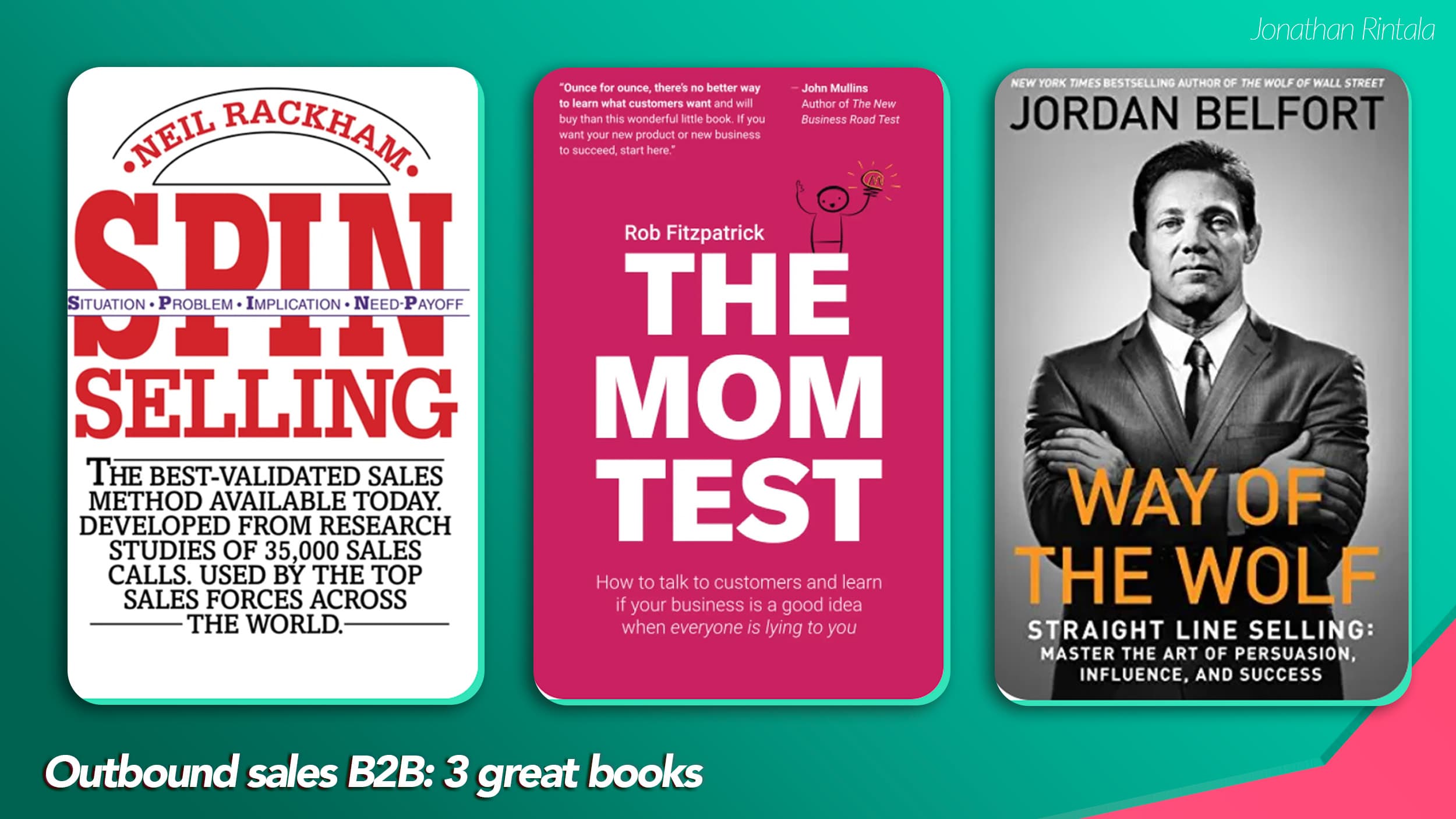
Also, 3. The Mom Test is a great read for the early stages of validation - "how to talk to customers and know if your idea is good, when everyone is lying to you".
What tools do you need to run outbound?
Well, in the start you don't need much.
A phone and an email that is not spam listed will get you far. In the early stages you don't have to think scalability yet. So write a few email outlines, make a basic call script - and start to talk to potential users.
When it's time to scale, or you want to focus on outbound email - here is my big playbook on how to run a outbound email strategy in 2024 for B2B SaaS.
How do you stand out in the inbox?
Here is a fun example of how I automated visuals through a screenshot generator.
A good way to make your emails pop in the inbox - and make your prospects feel like they are already in your product with their branding, etc.
3. Existing communities 👥
This is about finding users where they hang out, then joining the conversation.
Find leads and get users through Reddit
Use Reddit to plug your solution to relevant leads, get users that are actively looking for solutions, and learn about your ICP. Either by (A) commenting on highly relevant posts - with buyer intent, or by (B) posting yourself.
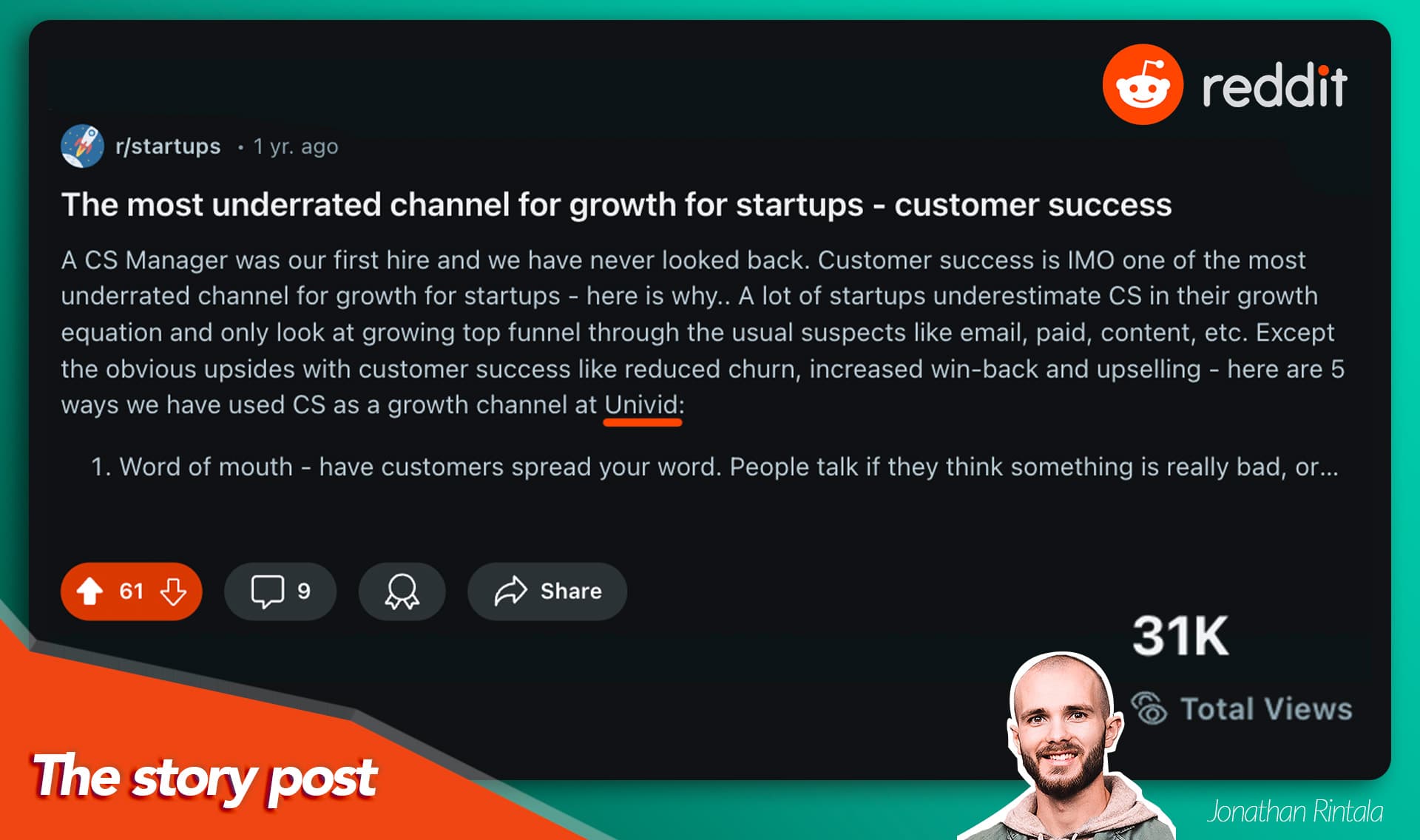
Example of Reddit "story post" where you mention your SaaS as subtle marketing
Learn more about growth hacking on Reddit and 4 examples of posts I have used successfully to get SaaS customers - check out my big guide on how to use Reddit to get customers for your startup.
Target Slack communities
Growth hacking is about being creative and taking advantage of opportunities that pop up. For example, a competitor that goes bust and leaves a bunch of unhappy users behind.
So, to show an example - here is a growth hack I did last week, doing exactly just that.
In short, a US competitor to us shut down unexpectedly. Right after they did a big LTD (life time deal) push through AppSumo, which was quite suspicious. Anyways, the founders also left around 3K unhappy users behind and stopped responding.
Hmm, an opportunity for us to tap into?
Well, I found out about this on Reddit (through my alert tool). I then went on to their LinkedIn company page, found a post where a bunch of unhappy users had left comments, and connected with a few of them. A short DM later - where I opened up to talk about the situation & telling these people about our SaaS (as an alternative solution) - it turns out this might be a good growth opportunity for us.
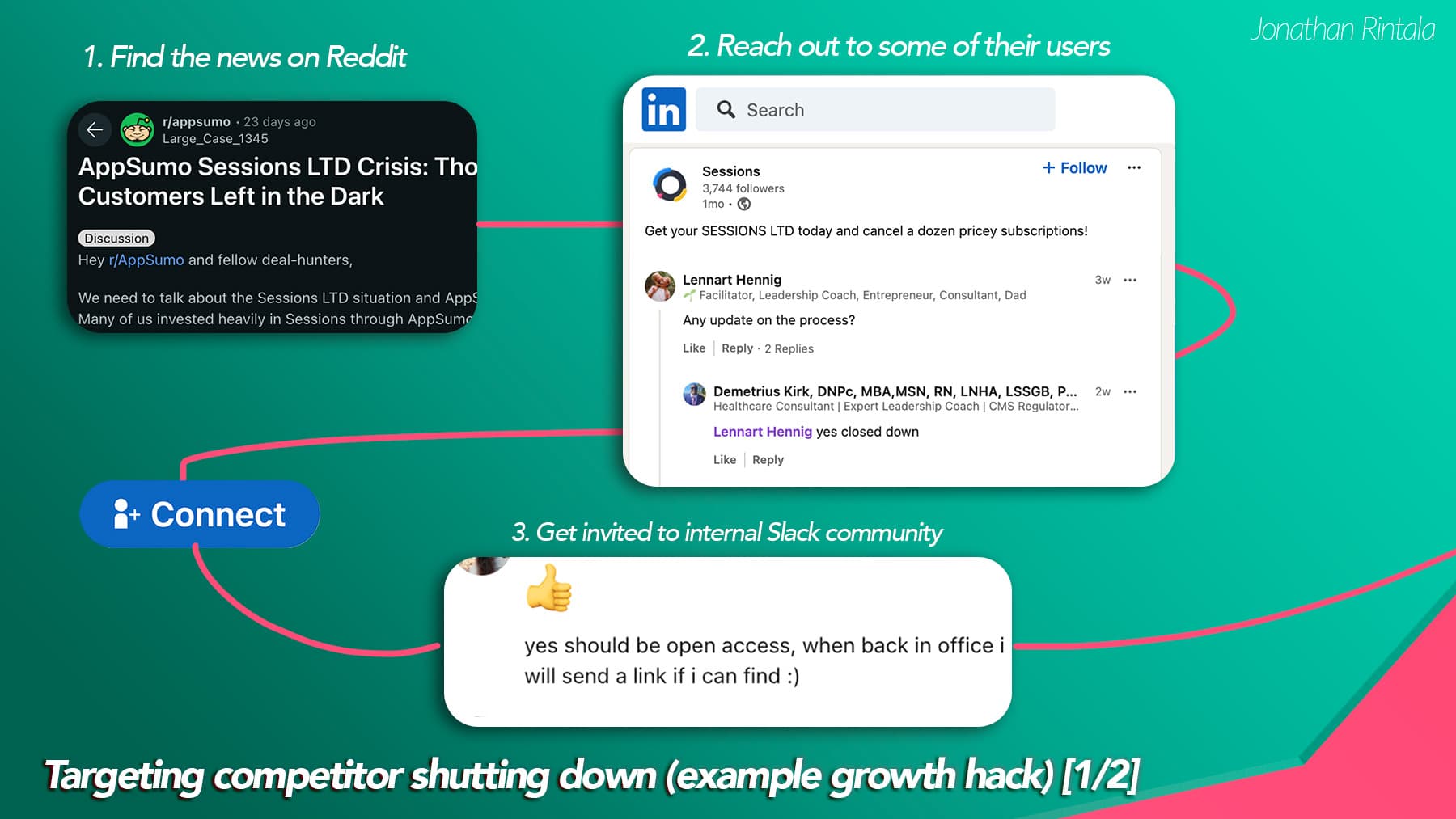
As it turns out - a few of these users were really liking the idea of having a new stable solution presented. And were more than happy to invite me to their private Slack community of +3K users!!
As the founders basically had just left - it was open to spark some conversations in the community. In a post and some DM:s I highlighted that we had a reliable alternative that was going nowhere - and also offered a special discount to any users that were affected by this shaky shutdown.
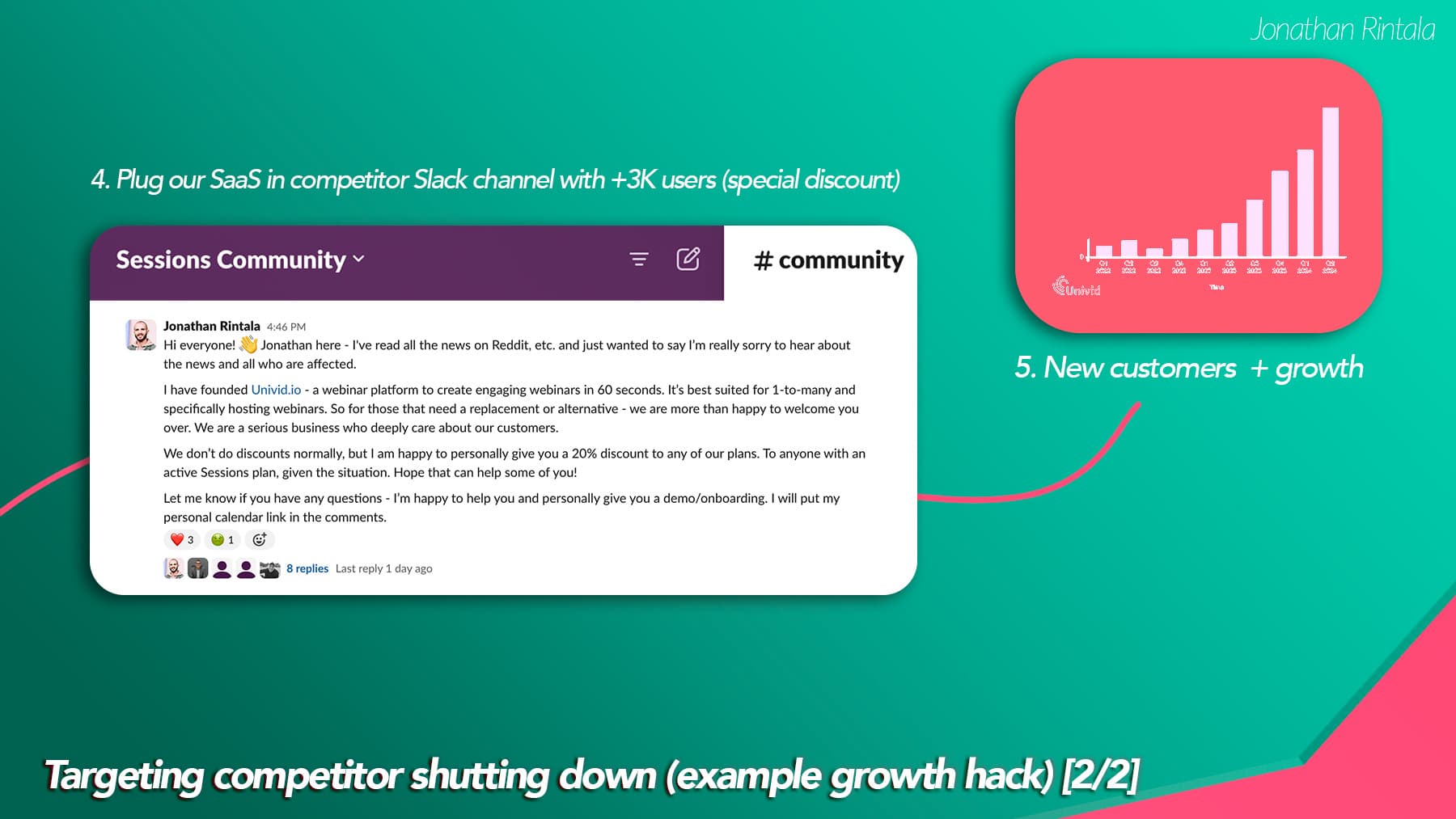
Turns out a lot of people were really thankful for this, as they were looking to replace their broken solution. And this got us a bunch of exposure, demos and new customers!
This is IMO a good example of having to be abit scrappy and creative - doing some detective work to get to all the way to a successful "growth hack".
Get some additional leads through SEO on Google
The final piece of the puzzle - to catch any additional leads searching on Google for a new solution - I added an alternatives page (us vs. competitor) as well. We have topical authority within webinars on Google as well as a strong technical SEO foundation, so within 12 hours we got a featured snippet for "competitor vs".
![Alternatives page with competitor vs. SaaS - Growth Hacking SEO on Google [b2b saas] Getting a featured snippet on Google.](/_next/image/?url=https%3A%2F%2Fimages.ctfassets.net%2F0ck4z1m88rve%2F2lYAG5KRBALBurT6z0ucG5%2Fdfd555c793ea495882577b716d9f4715%2Fgrowth-hacking-alternatives-pages-vs-competitor-saas-seo.jpg&w=3840&q=75)
Ranking on SERP with featured snipped on Google for competitor vs. SaaS (within 12 hours)
Learn how to do the same for your startup - 10 ways to grow a B2B SaaS SEO [The guide].
4. Built in product virality 🦠
You have probably seen the Sent from my iPhone. Well, that's one example of how Apple has engineered virality into their products. More specifically "exposure virality".
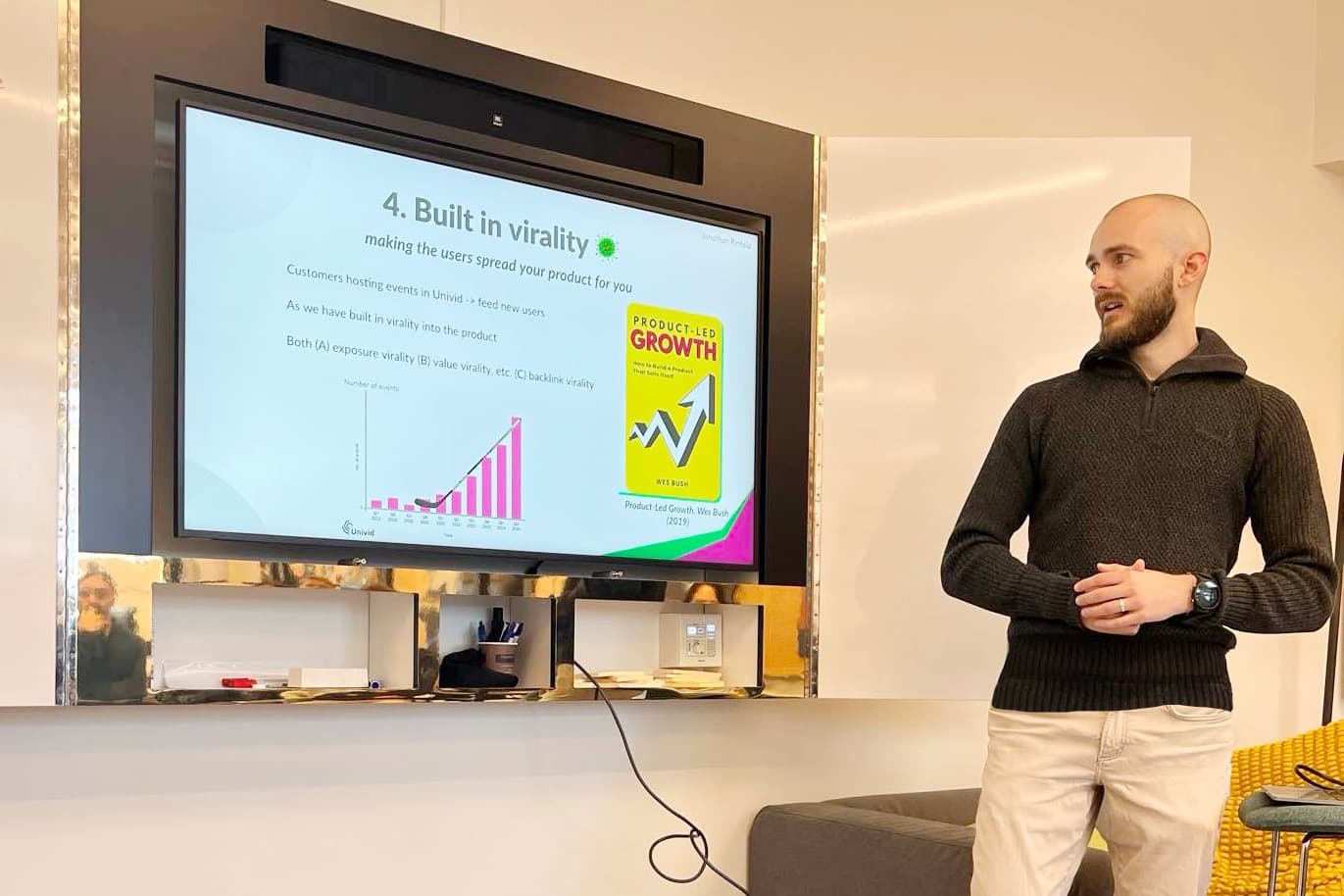
Me giving a talk on the topic of Growth Engineering at KTH Innovation in Stockholm, Sweden
'Exposure virality' means your customers show off your product to others because it makes them look good in some way, shape, or form.
If you manage to engineering your product with growth loops built into it - you will enjoy a viral growth curve for your startup, correlated to the usage of your product. That is very cheap growth, as the product, quite literally is "growing itself". Something the Product-Led Growth book by Wes Bush talks about in more detail.
![Built in exposure virality in a B2B SaaS product [example] Built in exposure virality in a B2B SaaS product [example]](/_next/image/?url=https%3A%2F%2Fimages.ctfassets.net%2F0ck4z1m88rve%2F431QnrKv90NHDh6km0TssH%2Fcd55415d21c5dcd22fe87ebe793e1b10%2Fbuilt-in-virality-saas-product-led-growth.jpg&w=3840&q=75)
For us at Univid, this has been the case, as we have a webinar platform. Where customer host external webinars towards new customers. Meaning their customers, in a subtle way become our prospects. We don't target the webinar attendees actively, but through some discrete exposure virality - the more webinars are hosted on our platform, the more we grow.
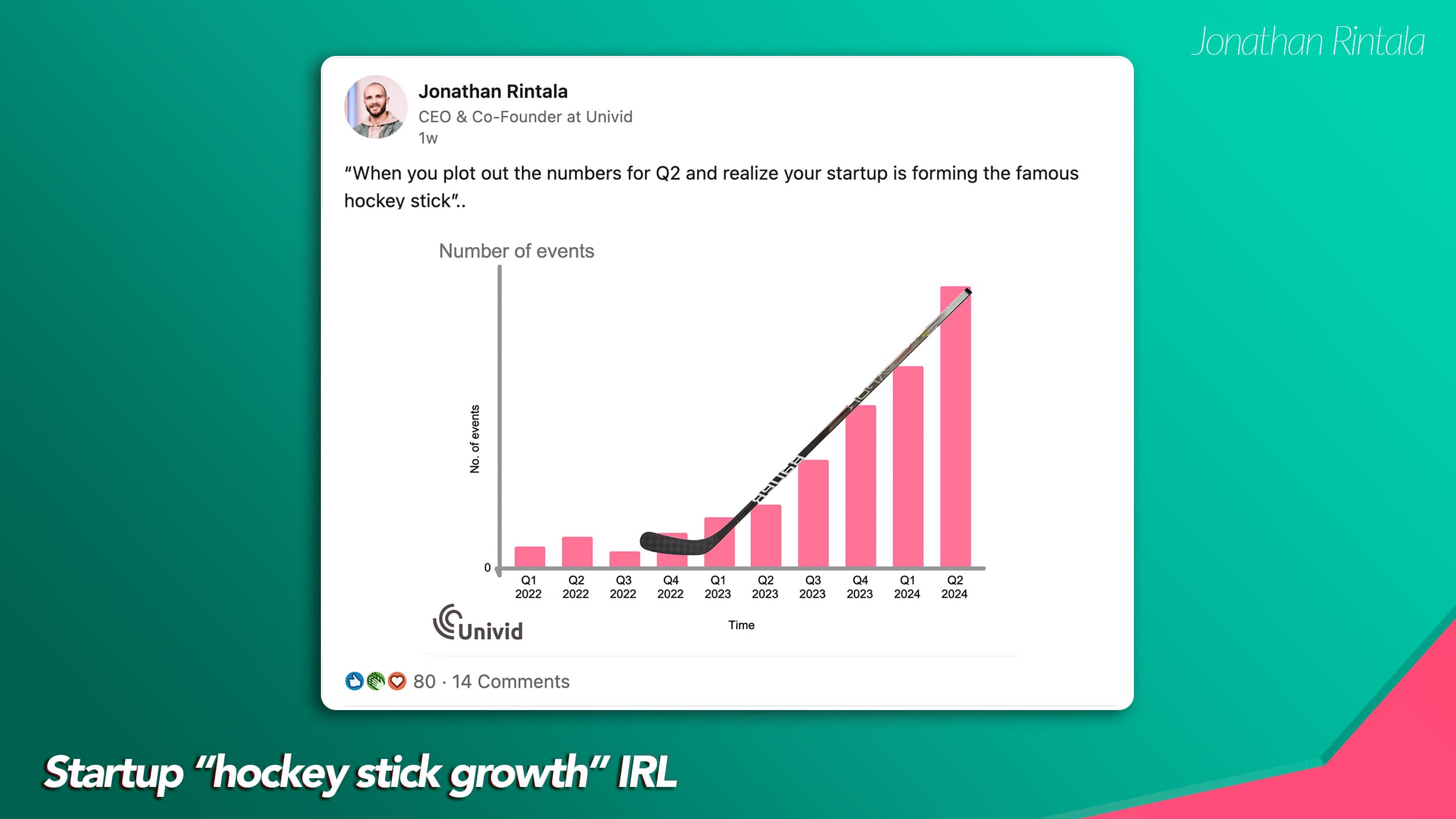
And with growth of # webinars (our North star metric) like this - it's been a pretty cool ride to be part of.
5. Founder-led content ✏️
Building a personal brand, and sharing what you build to get people invested in your story and you as a founder - is an extremely effective way to get long-lasting growth for your startup.
My best advice is finding a few influential people in your niche (that do this really well) ie. your content creator North stars - and "copy" them.
Well, with copy I mean take inspiration, try to write similar posts in their style, and then, over time, develop your own style. If you are curious on more details on how to do this - read the book Steal like An Artist by Austin Kleon, or check out my list of 10 ways how to build a B2B SaaS in public (to copy).
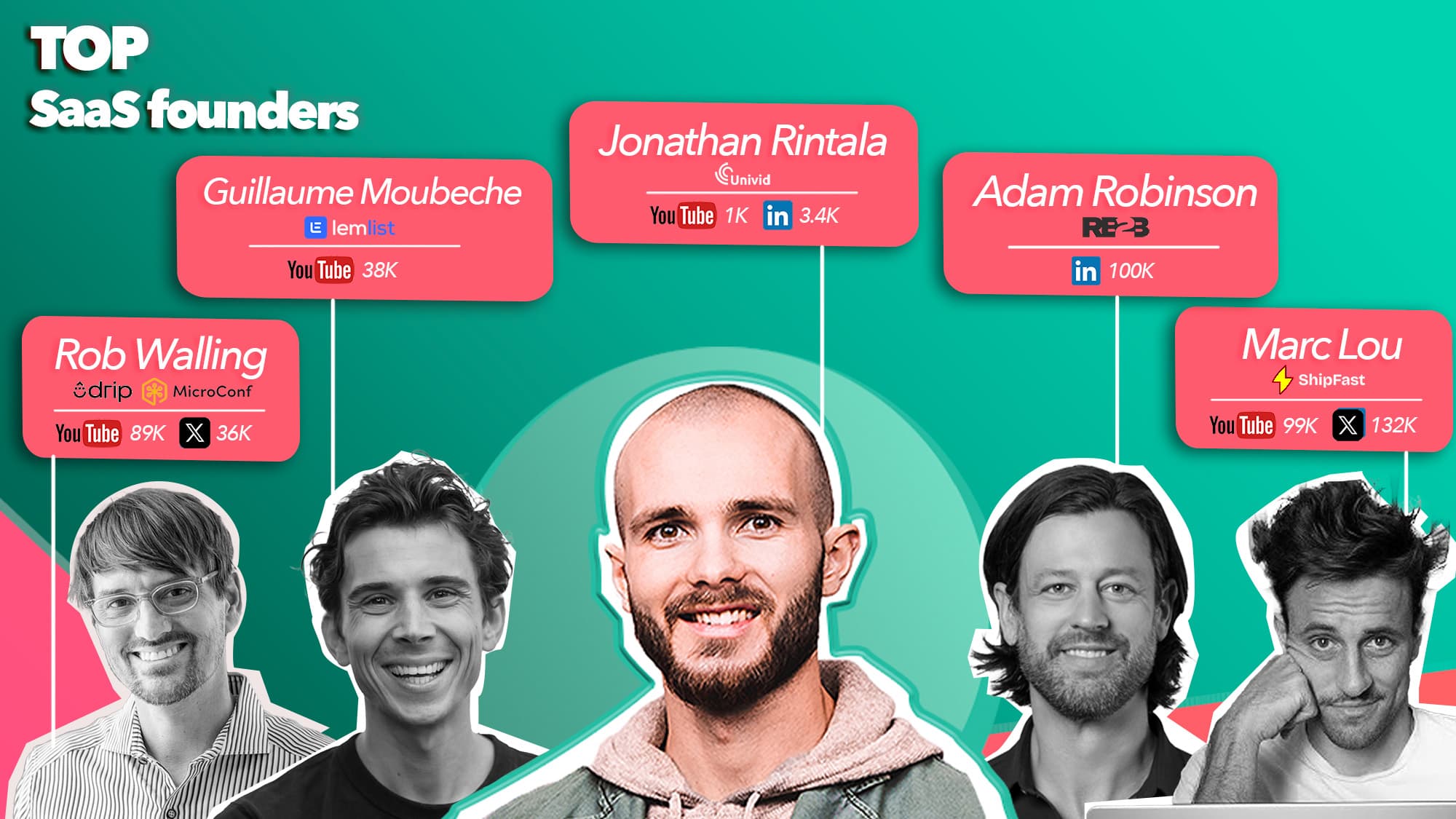
5 content creators and top SaaS founders that are building in public and doing this really well IMO is:
Adam Robinson (RB2B) -> LinkedIn (100K followers)
Guillaume Moubeche (Lemlist) -> LinkedIn / Youtube
Marc Lou (Ship fast) -> Twitter / Youtube
Rob Walling (Microconf)-> LinkedIn / Youtube
If you want to learn more about build a personal brand as a startup founder - the book Founder Brand by Dave Gerhardt (ex VP of Marketing at Drift) talks about. I've also written a guide on how to use founder-led storytelling to grow you startup.
![Share wins: How to build in public examples [B2B SaaS] Share wins: How to build in public examples [B2B SaaS]](/_next/image/?url=https%3A%2F%2Fimages.ctfassets.net%2F0ck4z1m88rve%2F3sbbPc0qfph1RdLQEihmnT%2F793050135165e3a0281de6214575fccc%2Fshare-wins-build-in-public-b2b-saas.jpg&w=3840&q=75)
Example 2 of 10 ways how to build in public and run founder-led content (sharing wins on LinkedIn)
Why is founder-led content effective? (real example)
There are a ton of advantages with running content as a founder and building a personal brand. You will own distribution, increase conversions, and potentially be able to get massive organic reach. People get invested in your story, you as a founder, want to buy from you, and be part of your journey.
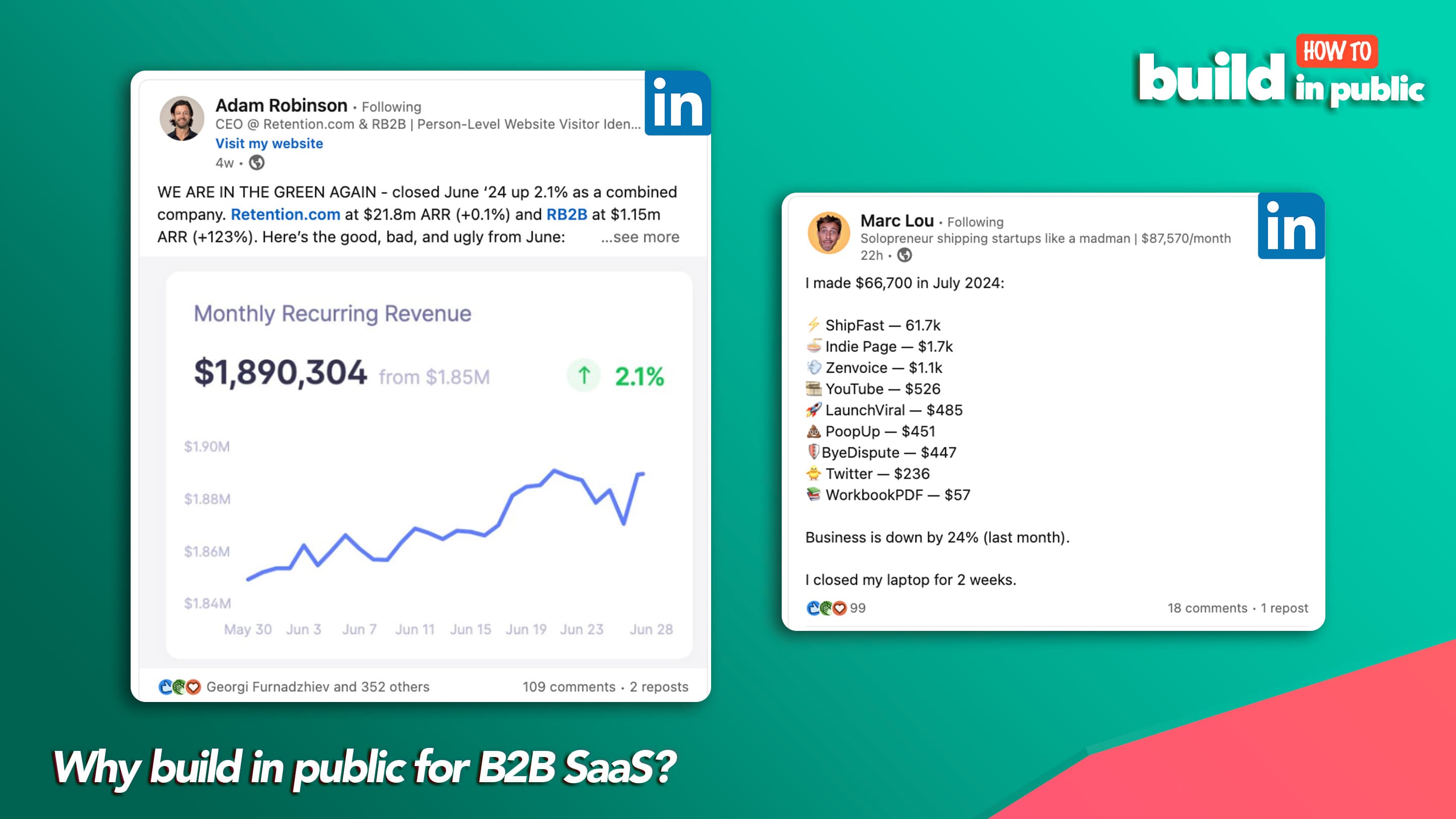
But even as a early stage startup - this is really important. Especially if you are founder running sales or growth. I will showcase this with an example in 3 steps from this week.
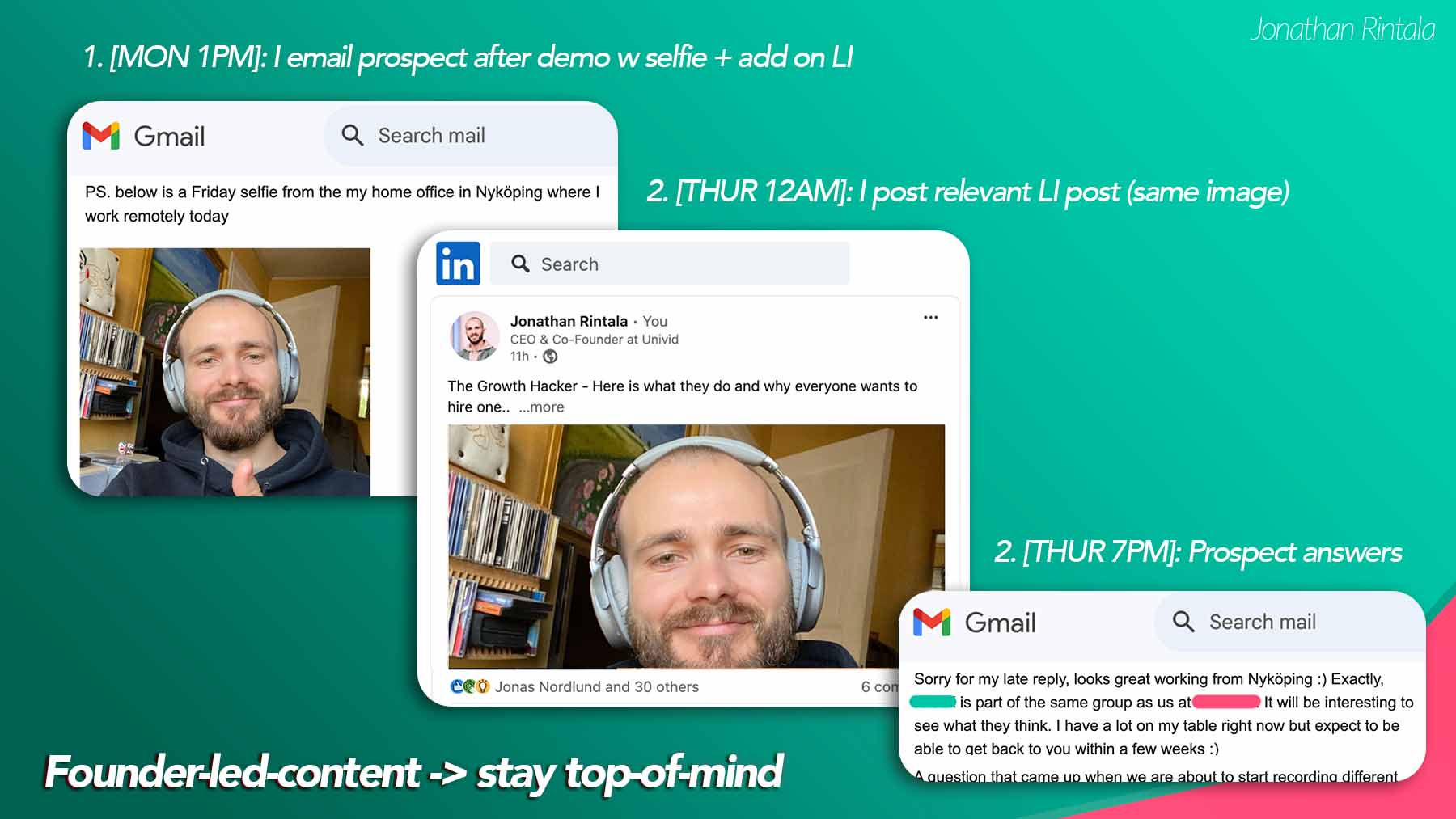
This is an example of how I increase conversions from demos through founder-led content, without being a pain in the a** calling, emailing, etc. in 3 steps:
Me emailing a selfie to Prospect + adding on LinkedIn (it’s great to get a response + be personal).
Me posting a LinkedIn post relevant to the Prospect (with the same selfie).
Prospect responds with a follow-up question to move forward.
Just by adding my prospects before/after the demo and being active on LinkedIn with founder-led content, I stay top of mind and increase conversions to > 30% from demo to customer. SO often prospect responses correlates with me posting something the same day.
Dive deeper into growth hacking - The best growth hacking books
If you want to dive further into growth hacking - you should consider reading some books on the topic.
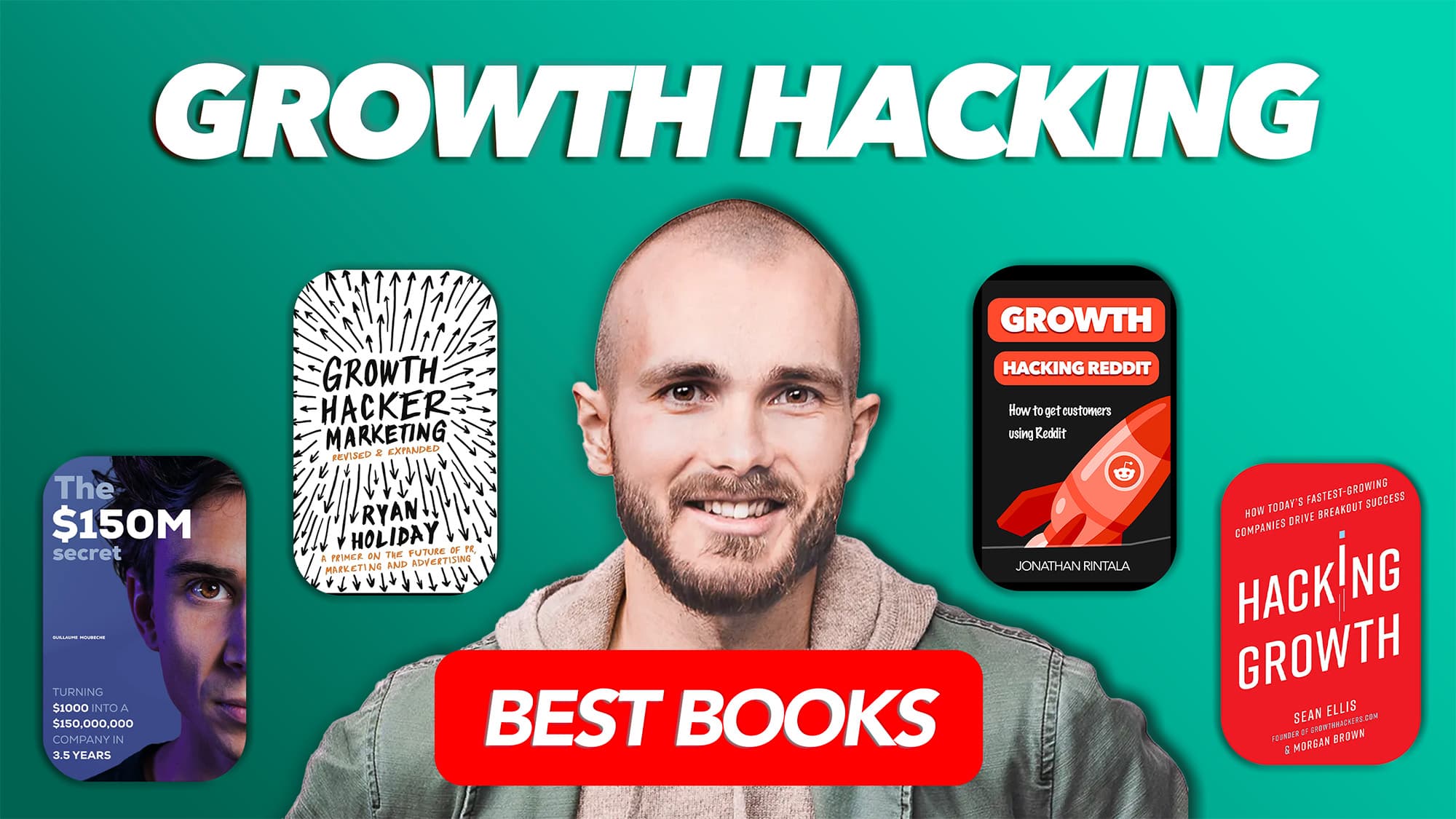
Here are some of the top reads in growth hacking. Learn to master driving growth for your startup.
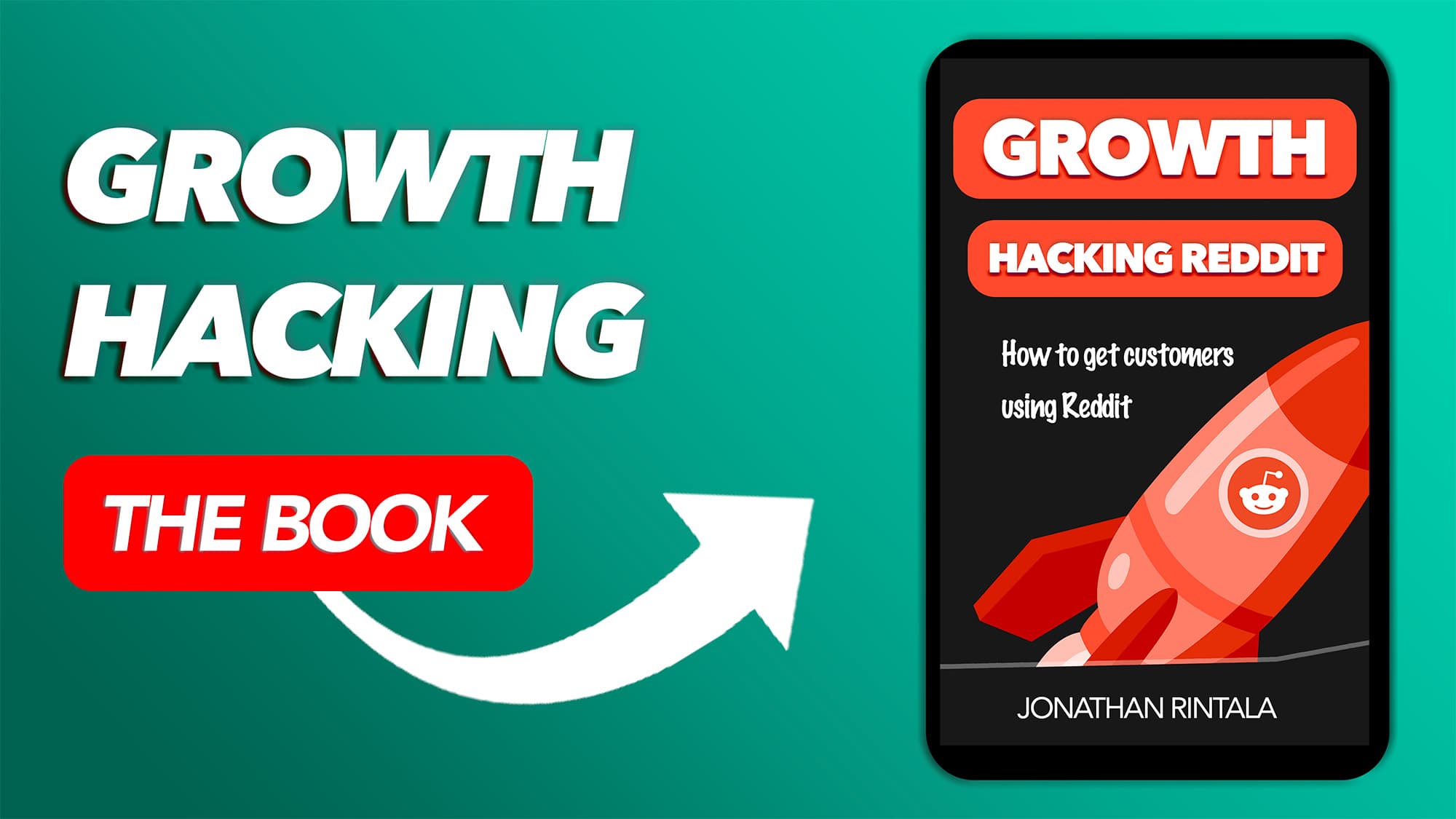
Growth Hacking Reddit is a great book to start out with - a practical guide to getting customers using Reddit. A proven playbook used by founders, growth hackers, and marketers, at some of the fastest growing companies in the world.
Conclusion
Growth hacking is not about chasing quick wins - it's about engineering your way to repeatable ways to reach your ICP where they are. In this article, we went through 5 ways I've used to get our 20 first paying B2B SaaS customers.
Involving creating win-wins for partners and customers to promote you for free and running traditional outreach (and how you can stand out).
Also, we talked about how to tap into existing demand (in communities), engineer growth into your product, and run founder-led content like the best.
Feel free to connect on LinkedIn or follow my newsletter if you're into growing startups and SaaS. Also, let me know if there are any channels missing from the list - send me a DM on LinkedIn.
Want to learn more about growing SaaS companies?

